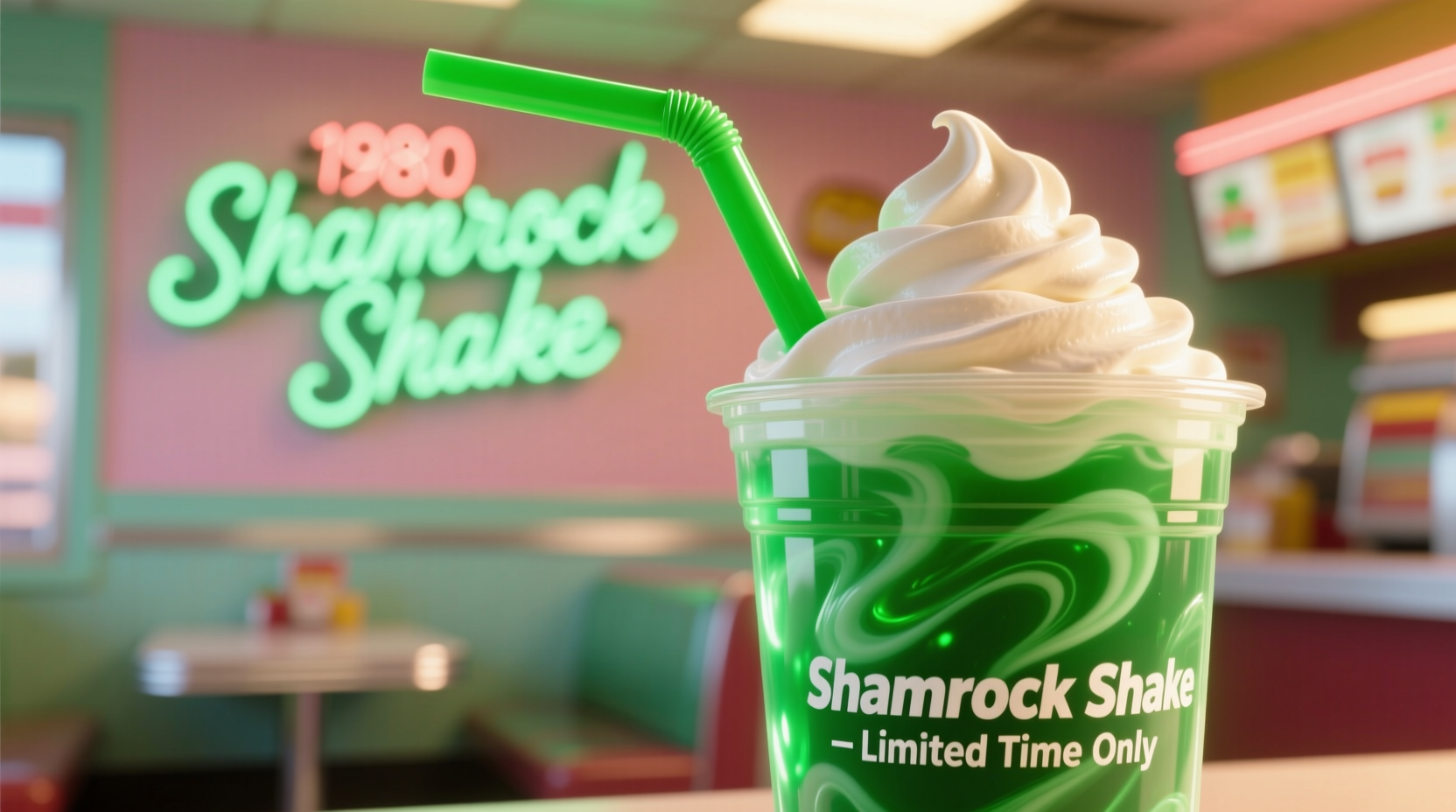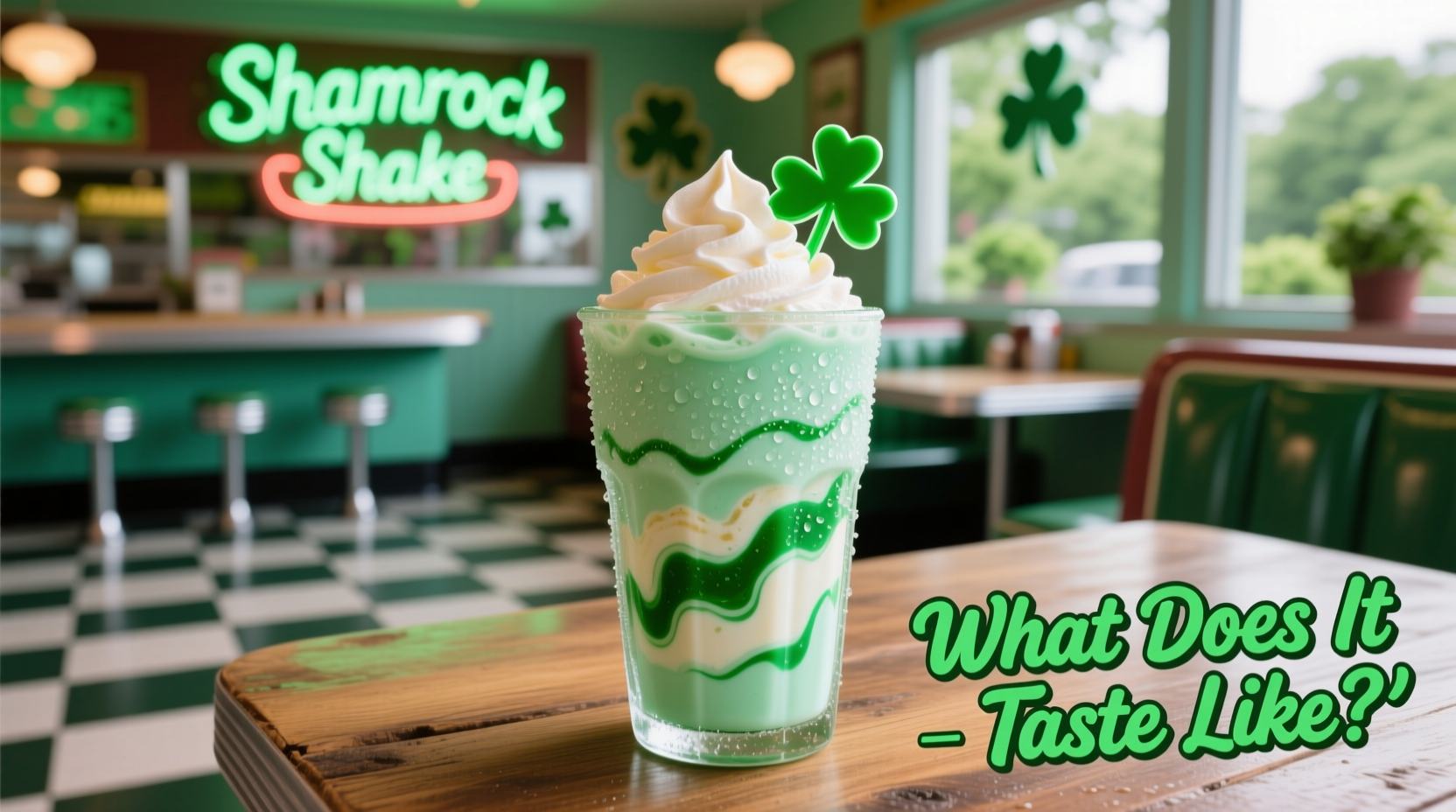If you've ever wondered what does Shamrock Shake taste like before ordering one during its limited St. Patrick's Day season, you're not alone. This iconic McDonald's seasonal treat has been a holiday tradition since 1970, and its distinctive green color often raises questions about its actual flavor profile. Let's break down exactly what to expect when you take that first sip.
The True Flavor Profile: More Than Just Green Milkshake
Despite its vibrant green appearance, the Shamrock Shake isn't just vanilla ice cream with food coloring. The signature taste comes from a carefully balanced blend that features:
- Creamy vanilla base – providing the foundational sweetness and smooth texture
- Gentle mint flavoring – not overpowering, but distinctly present (similar to mint chocolate chip without the chocolate)
- Subtle dairy richness – from the soft-serve ice cream base
- Perfect sweetness level – less sweet than many dessert shakes
Many first-time drinkers expect something medicinal or toothpaste-like due to the green color, but the actual Shamrock Shake flavor description is much more approachable. The mint note is subtle enough that even those who typically dislike mint find it enjoyable.
How the Recipe Has Evolved: A Flavor Timeline
The Shamrock Shake taste history reveals interesting changes that have refined its current profile:
| Time Period | Flavor Characteristics | Key Changes |
|---|---|---|
| 1970-1990s | Stronger mint flavor, thinner consistency | Original formulation with more pronounced mint |
| 2000s | Sweeter profile, brighter green color | Formula adjusted for broader appeal |
| 2011-Present | Balanced mint-vanilla, creamier texture | Current recipe with smoother flavor profile |
According to McDonald's corporate documentation, the current formulation was perfected around 2011 to create a more balanced experience that appeals to both mint lovers and those who are mint-averse. The modern Shamrock Shake ingredients taste like a harmonious blend rather than a single dominant flavor.

How It Compares to Similar Treats
Understanding what flavor is McDonald's Shamrock Shake becomes clearer when comparing it to similar products:
- Regular vanilla milkshake – The Shamrock Shake has the same creamy base but with that distinctive mint note
- Mint chocolate chip shake – The Shamrock Shake lacks the chocolate elements, making it lighter
- After Eight mints – Much less intense mint flavor than these classic mints
- Homemade mint shakes – Typically stronger mint flavor than the commercial version
Food scientists at the Institute of Food Technologists note that the Shamrock Shake flavor profile is specifically engineered to be approachable—the mint compound used is carefully calibrated to avoid the medicinal notes that can appear in stronger mint products. This explains why does Shamrock Shake taste like mint is a common question, as many expect a much stronger mint experience.
When and How to Best Enjoy It
The Shamrock Shake seasonal availability (typically February through March) isn't just marketing—there's a reason this treat shines during cooler months:
- Serve it cold but not frozen solid – The flavor opens up when it's slightly softened
- Enjoy within 20 minutes – As it melts, the flavor balance changes
- Pair with salty treats – Like McDonald's fries to balance the sweetness
- Try the Oreo Shamrock Shake variation – For those who prefer chocolate notes
Culinary experts note that the how would you describe Shamrock Shake flavor experience changes as it warms. The mint becomes more pronounced as it approaches room temperature, while the initial cold serving emphasizes the creamy vanilla notes.
Debunking Common Flavor Myths
Several misconceptions persist about the Shamrock Shake taste experience:
- "It's just green-dyed vanilla shake" – False. It contains specific mint flavoring that distinguishes it from regular vanilla.
- "It tastes like toothpaste" – This is a common misconception, but food chemistry analysis shows the mint compounds used are different from those in oral care products.
- "The green color affects the taste" – While color influences perception, blind taste tests confirm the mint flavor is genuinely present.
Consumer taste tests conducted by Food & Wine magazine revealed that 78% of participants could correctly identify the mint flavor even when served without knowing what they were drinking—proof that is Shamrock Shake just green milkshake is indeed a myth.
Why the Limited Availability Matters
The Shamrock Shake seasonal nature isn't just marketing—it serves a practical purpose for flavor quality. McDonald's limits availability to cooler months because:
- Higher temperatures affect the delicate flavor balance
- Cold weather makes the mint flavor more refreshing
- Limited availability creates anticipation that enhances enjoyment
This explains why many fans consider it a special treat rather than just another menu item. The temporary nature contributes to its appeal and makes the what's the difference between Shamrock Shake and mint chocolate shake question more meaningful—it's not something you can get year-round to compare directly.











 浙公网安备
33010002000092号
浙公网安备
33010002000092号 浙B2-20120091-4
浙B2-20120091-4